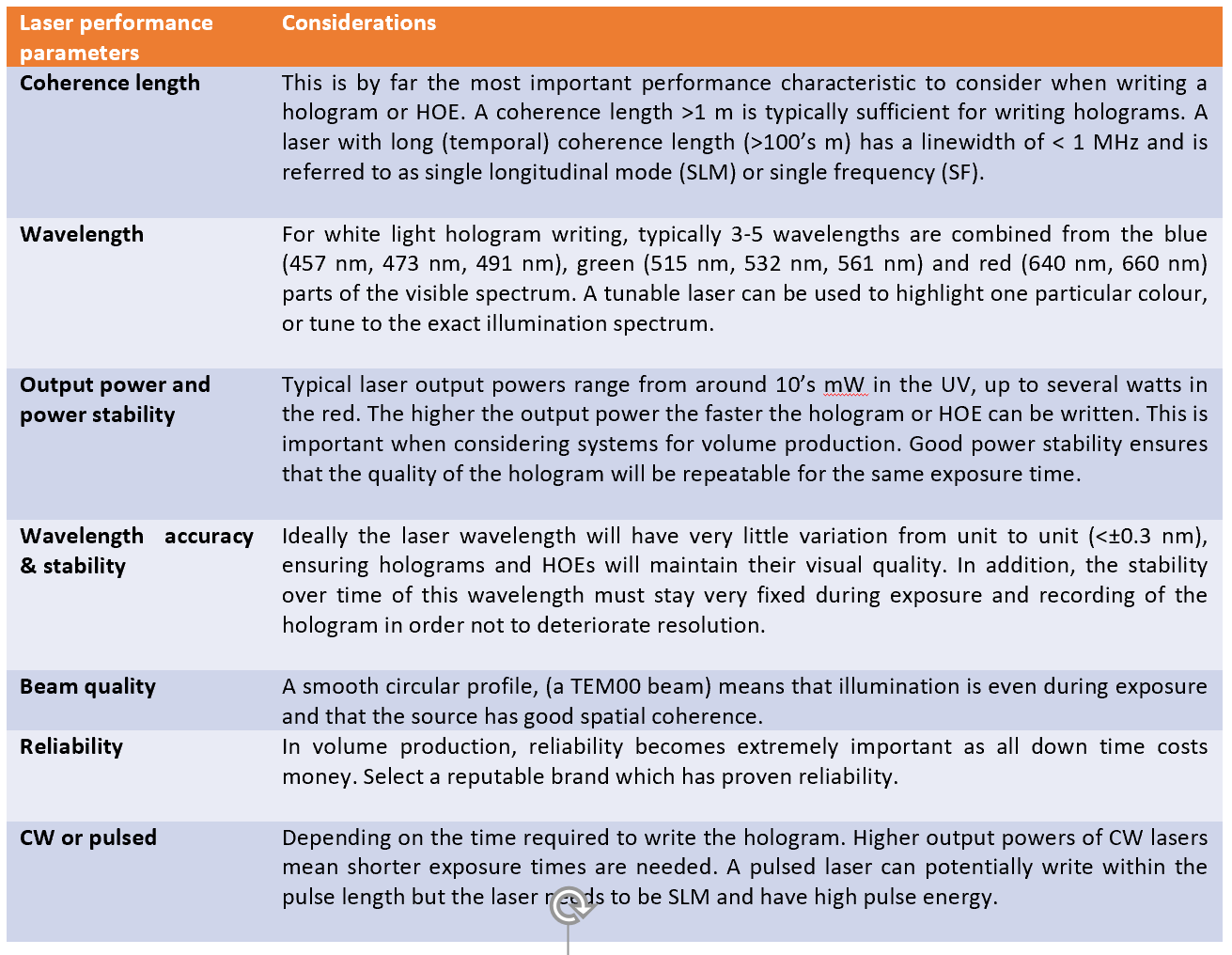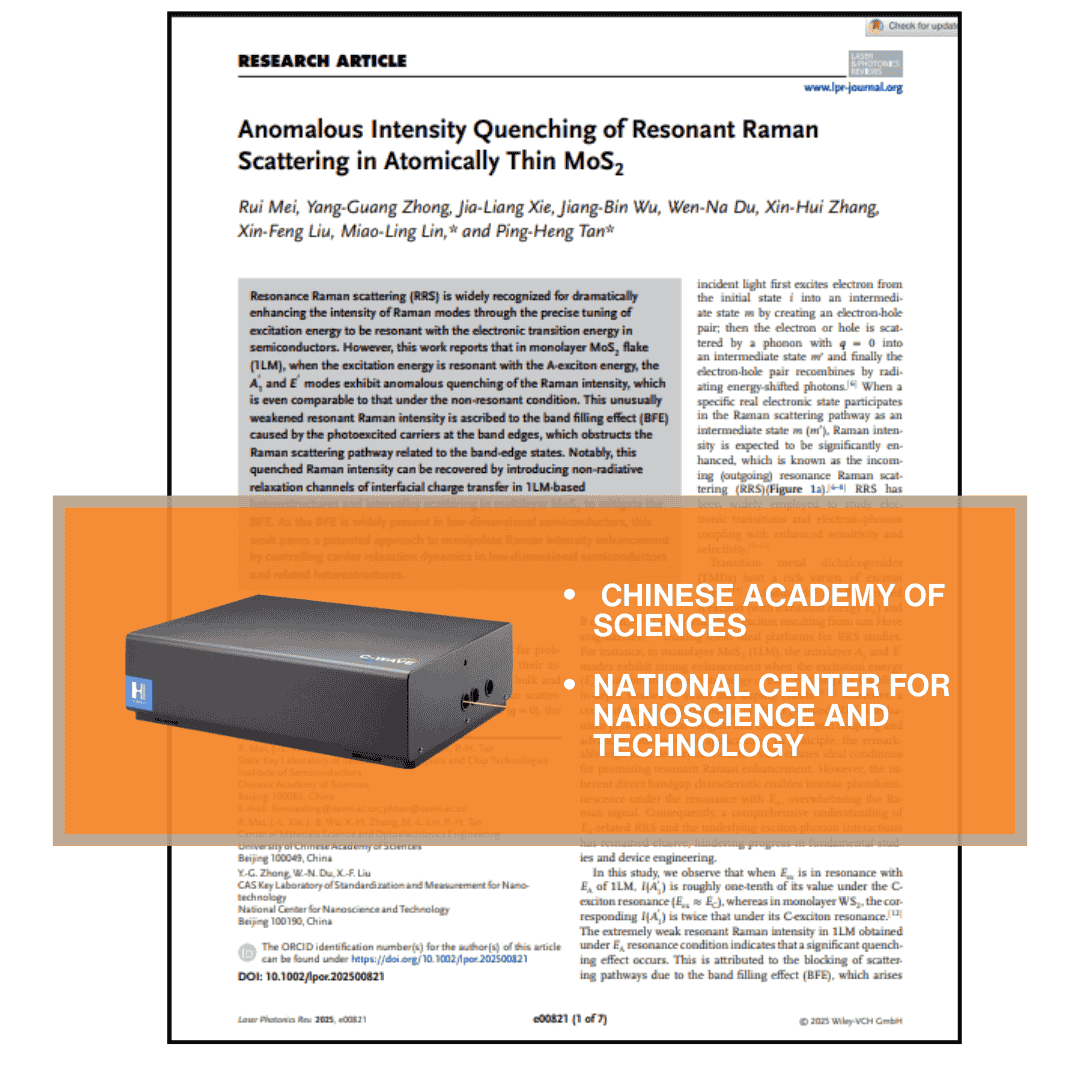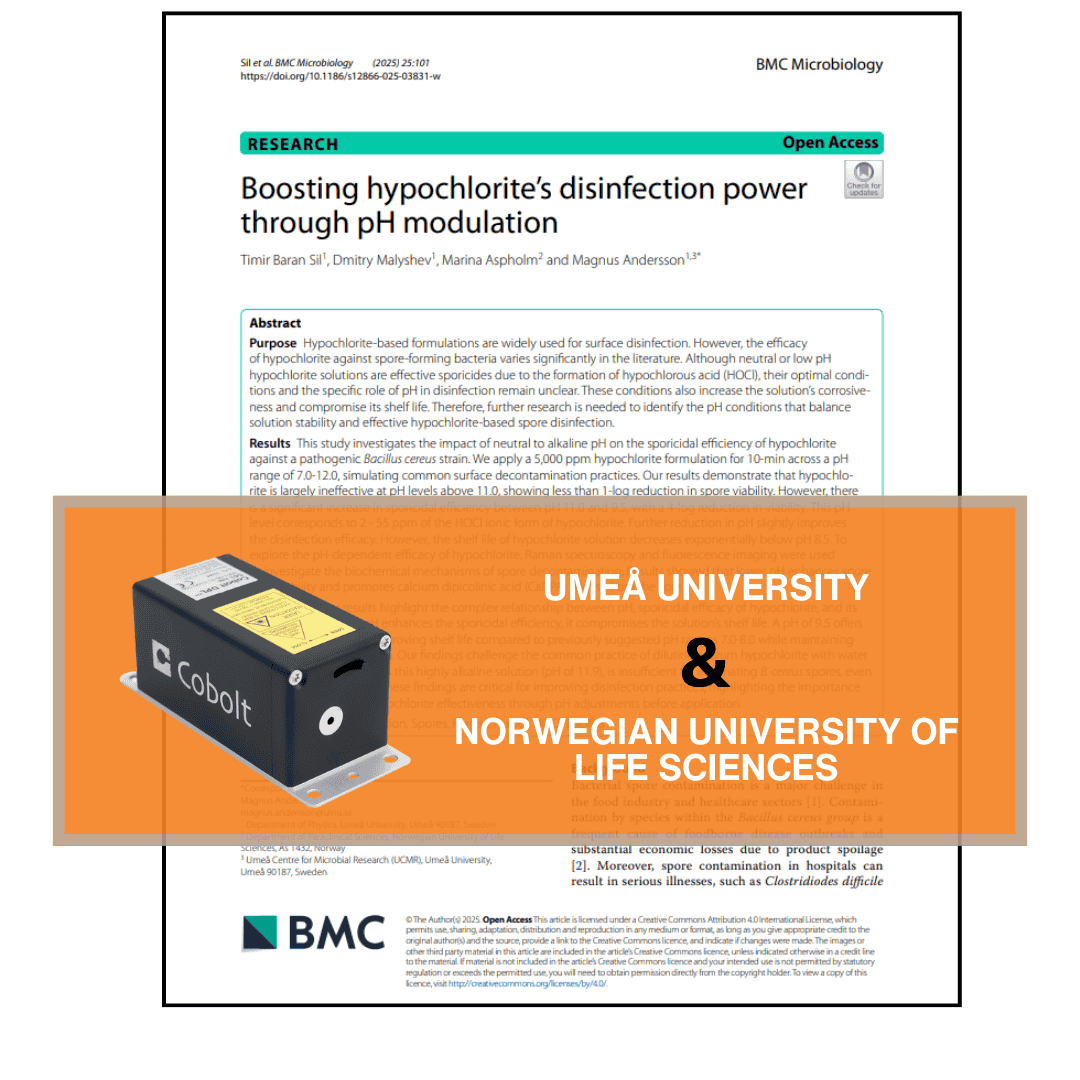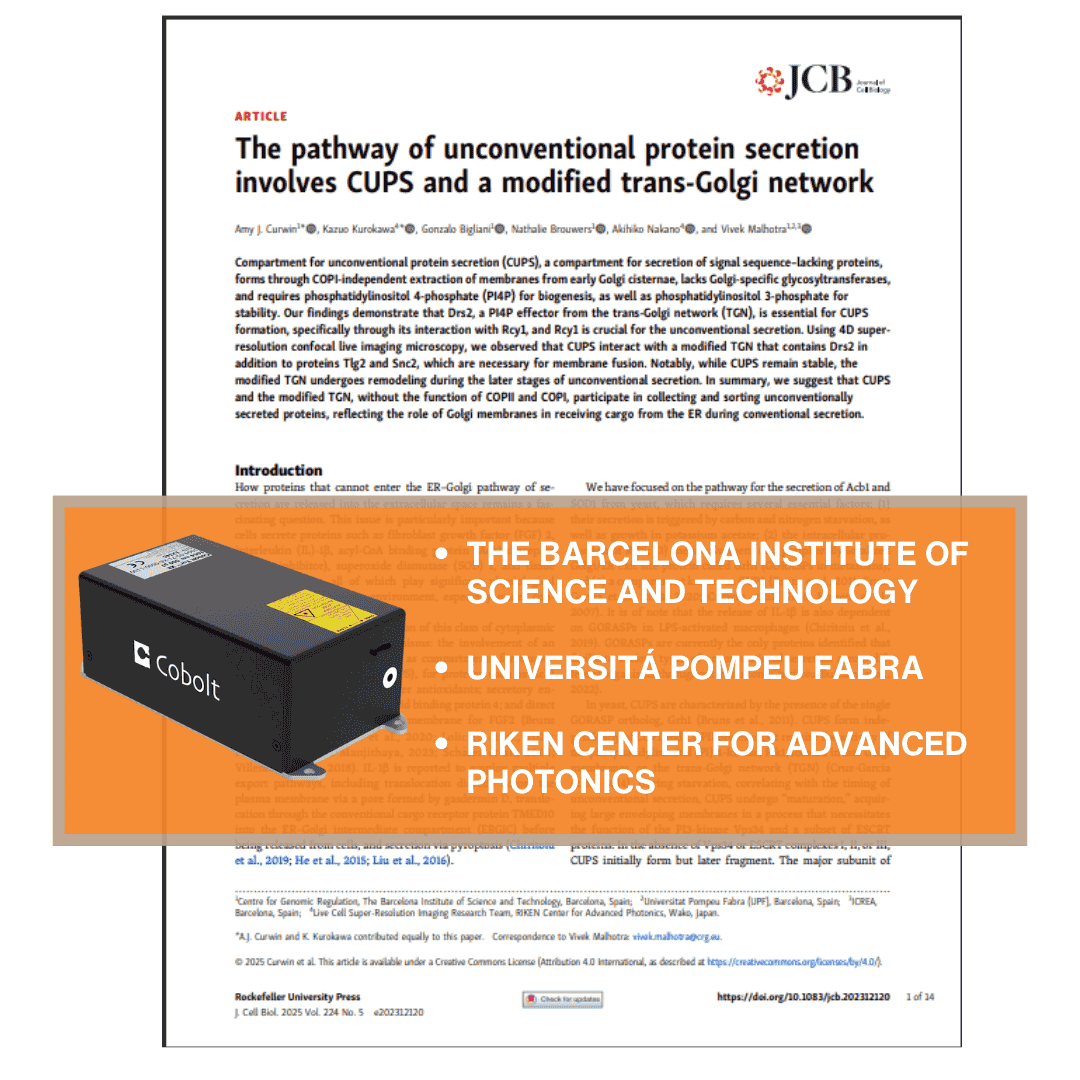3 March, 2021
Choosing lasers for true colour or white light holograms
The single most important performance characteristic required when considering lasers for true colour holographic applications, also known as white light holograms, is long coherence length, in addition to good power stability, wavelength accuracy and stability, and, above all, excellent reliability.
Developments in laser technology, emulsions and illumination sources have also lead to drastic improvements in the white light holography, which is opening up new applications for holography related to ultra-realistic 3D replication of objects. The performance characteristics of the lasers used to write single or multi-color holograms or holographic optical elements (HOEs), whether as a master or in volume production, are critical.
What kind of laser is used for holography?
There are essentially 5 types of solid state laser technology which meet the need for long coherence length in order to write holograms or HOE´s. All offering unique wavelengths, either fixed or tunable and output powers from 10´s mW up to multiple watts:
- Frequency-converted diode-pumped SLM lasers (DPL or DPSS lasers)
- Tunable frequency-converted CW OPOs
- Single frequency or frequency stabilized diode lasers
- Frequency converted fiber lasers
- Pulsed solid state lasers
Laser performance requirements
By far the most important performance requirement on the laser for writing a hologram or HOE is the coherence length. A hologram can more technically be described as a photograph of the light field including its phase content. In order to record the phase content of the light field, the source needs to be coherent. By coherent we mean that all the light waves travel in synchronization i.e., they have the same period and phase, and this characteristic is found in truly single longitudinal mode (SLM) or single frequency (SF) lasers. The coherence length of a light source is directly correlated to the spectral bandwidth of the emitted light (temporal coherence) and the homogeneity of the phase front over the beam cross section (spatial coherence). The distance the light needs to be coherent over in order to make an interference pattern is determined by the depth of field; the larger the depth of field the longer the coherence length that is needed. In general, a coherence length of >1m is more than sufficient.
In addition to coherence length, there are a few other parameters which are important to consider. The table below discusses each laser specification in more detail:
Table 1. Important laser performance characteristics for writing holograms.
The single most important performance characteristic required is long coherence length, in addition good power stability, wavelength accuracy and stability and above all excellent reliability. Make sure the laser you choose has a long warranty and is made to the highest of standards within the solid state laser manufacturing world. All lasers from HÜBNER Photonics are made in clean room environments and using our proprietary HTCure manufacturing to ensure ultimate robustness.
More resources
Explore our Publications for practical insights on how our customers are leveraging the power of our lasers in their projects.
Customer publications
Application: Raman spectroscopy
Product line: C-WAVE
Wavelength: Tunable
Optimizing Resonant Raman Scattering in Monolayer
Optimizing the sensitivity of Raman spectroscopy by engineering carrier relaxation dynamics to enhance Resonance Raman scattering intensity
Customer publications
Application: Raman spectroscopy
Product line: Cobolt
Wavelength: 785 nm
Tweaking Bleach’s PH Against Bacterial Spores
Scientists identify the optimal pH for hypochlorite-based sporicidal formulations that can balance solution stability and effectiveness of spore disinfection.
Customer publications
Application: Fluorescence microscopy
Product line: Cobolt
Wavelength: 473 nm, 561 nm
Cobolt Blues and Jive in Uncoventional Protein Secretion
Researchers have identified a specialized compartment called CUPS (Compartment for Unconventional Protein Secretion) that forms independently of the traditional cell pathway system




